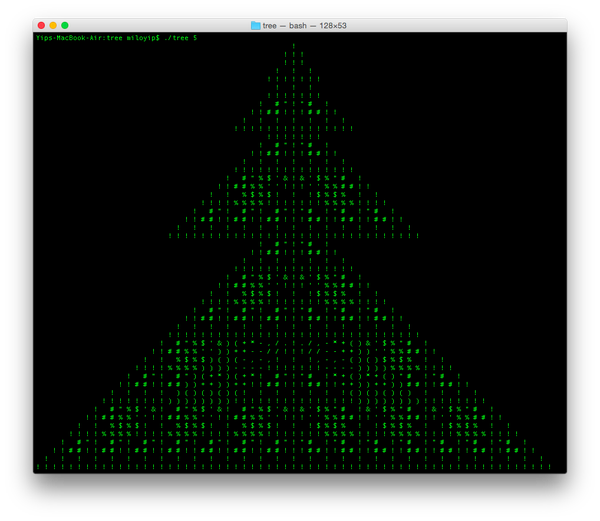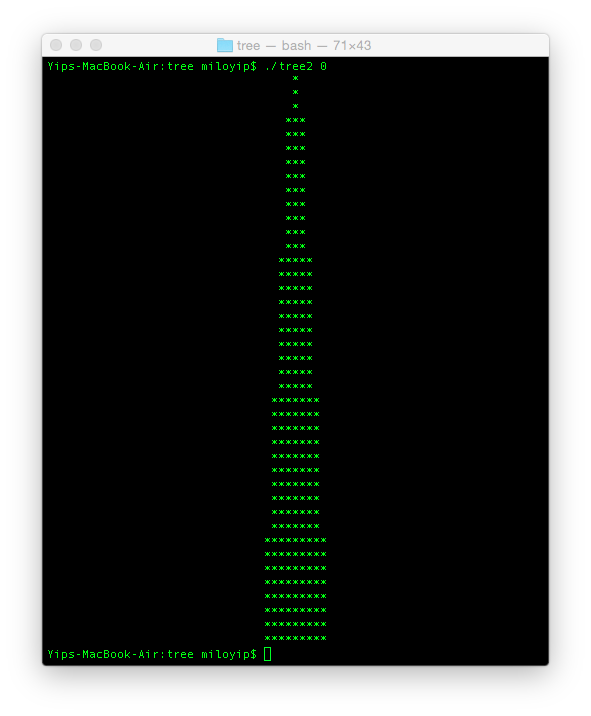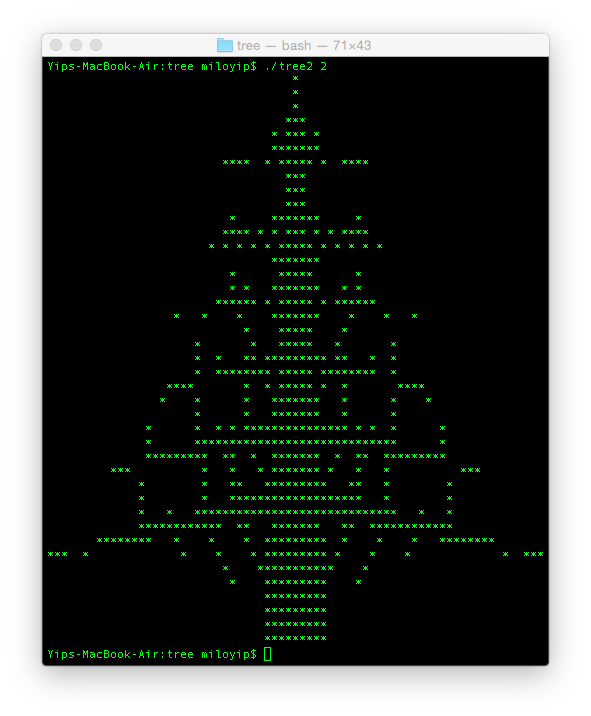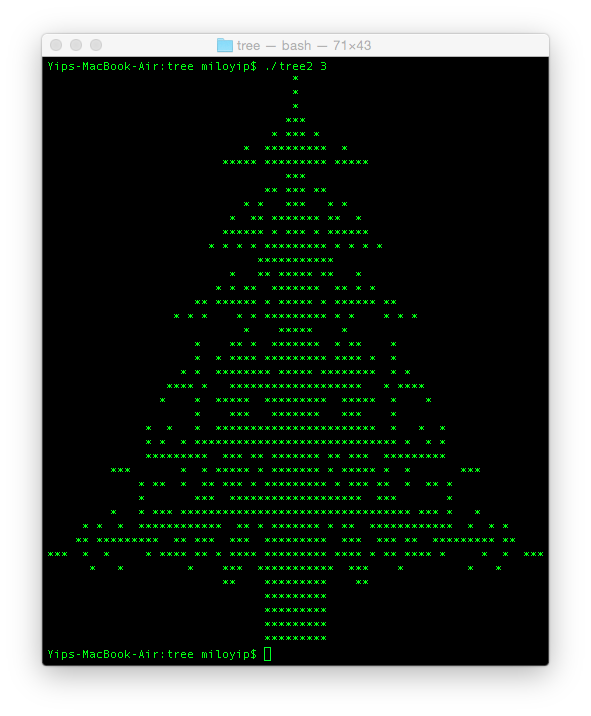我使用了左右镜像的Sierpinski triangle,每层减去上方一小块,再用符号点缀。可生成不同层数的「圣诞树」,如下图是5层的结果。
#include <stdio.h>
#include <stdlib.h>
int main(int argc, char* argv[]) {
int n = argc > 1 ? atoi(argv[1]) : 4;
for (int j = 1; j <= n; j++) {
int s = 1 << j, k = (1 << n) - s, x;
for (int y = s - j; y >= 0; y--, putchar(‘\n‘)) {
for (x = 0; x < y + k; x++) printf(" ");
for (x = 0; x + y < s; x++) printf("%c ", ‘!‘ ^ y & x);
for (x = 1; x + y < s; x++) printf("%c ", ‘!‘ ^ y & (s - y - x - 1));
}
}
}
基本代码来自Sierpinski triangle的实现,字符的想法来自于code golf - Draw A Sierpinski Triangle。
--
更新1: 上面的是我尝试尽量用最少代码来画一个抽象一点的圣诞树,因此树干都没有。然后,我尝试用更真实一点的风格。因为树是一个比较自相似的形状,这次使用递归方式描述树干和分支。
n = 0的时候,就是只画一主树干,树干越高就越幼:
n = 1的时候,利用递归画向两面分支,旋转,越高的部分缩得越小。
n = 2 的时候,继续分支出更细的树支。
n = 3就差不多够细节了。
代码长一点,为了容易理解我不「压缩」它了。
#include <math.h>
#include <stdio.h>
#include <stdlib.h>
#define PI 3.14159265359
float sx, sy;
float sdCircle(float px, float py, float r) {
float dx = px - sx, dy = py - sy;
return sqrtf(dx * dx + dy * dy) - r;
}
float opUnion(float d1, float d2) {
return d1 < d2 ? d1 : d2;
}
#define T px + scale * r * cosf(theta), py + scale * r * sin(theta)
float f(float px, float py, float theta, float scale, int n) {
float d = 0.0f;
for (float r = 0.0f; r < 0.8f; r += 0.02f)
d = opUnion(d, sdCircle(T, 0.05f * scale * (0.95f - r)));
if (n > 0)
for (int t = -1; t <= 1; t += 2) {
float tt = theta + t * 1.8f;
float ss = scale * 0.9f;
for (float r = 0.2f; r < 0.8f; r += 0.1f) {
d = opUnion(d, f(T, tt, ss * 0.5f, n - 1));
ss *= 0.8f;
}
}
return d;
}
int main(int argc, char* argv[]) {
int n = argc > 1 ? atoi(argv[1]) : 3;
for (sy = 0.8f